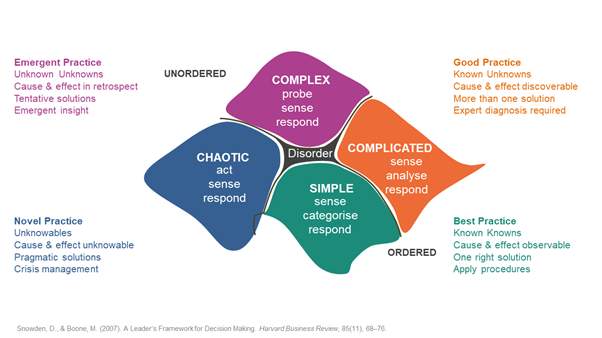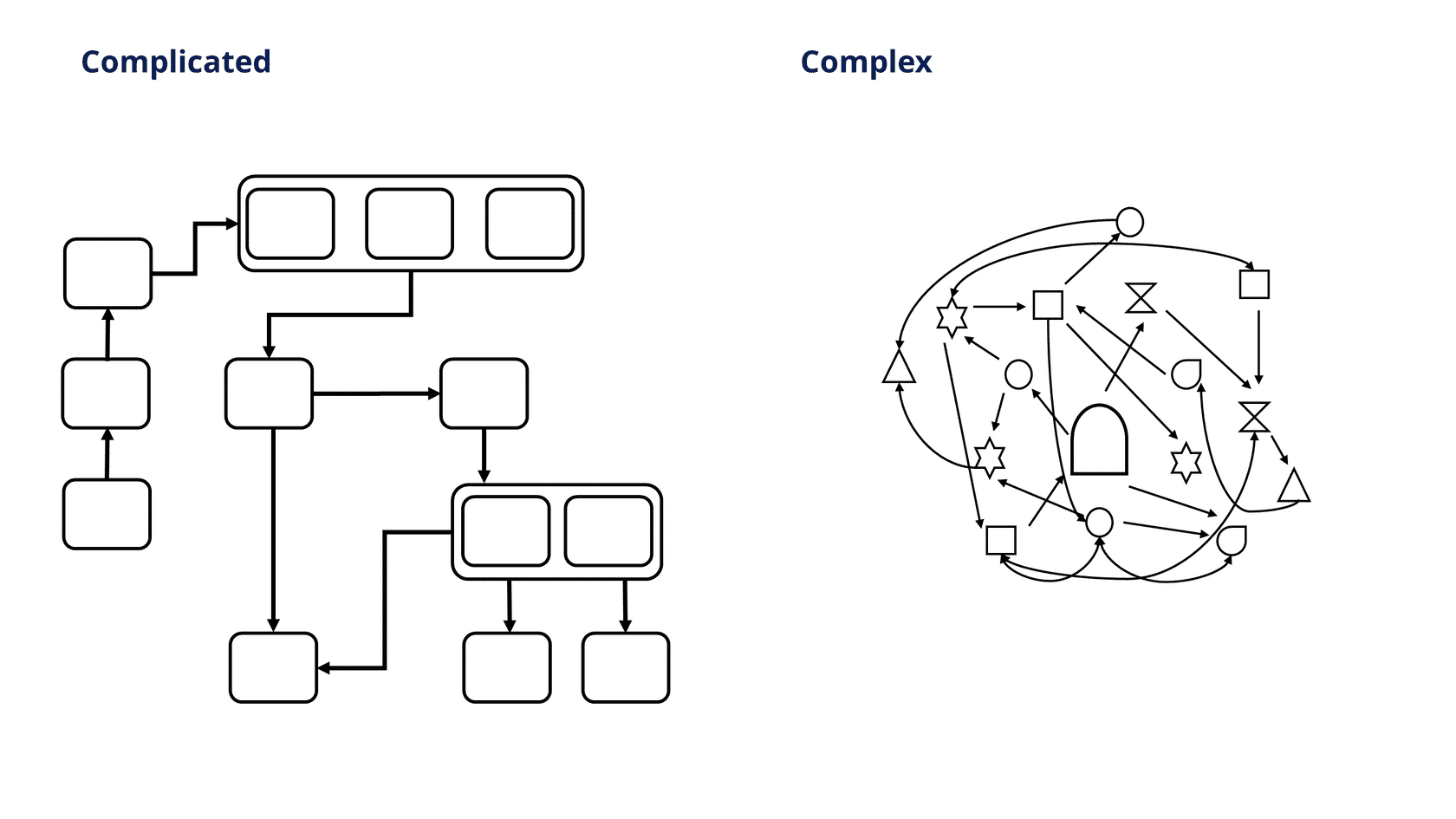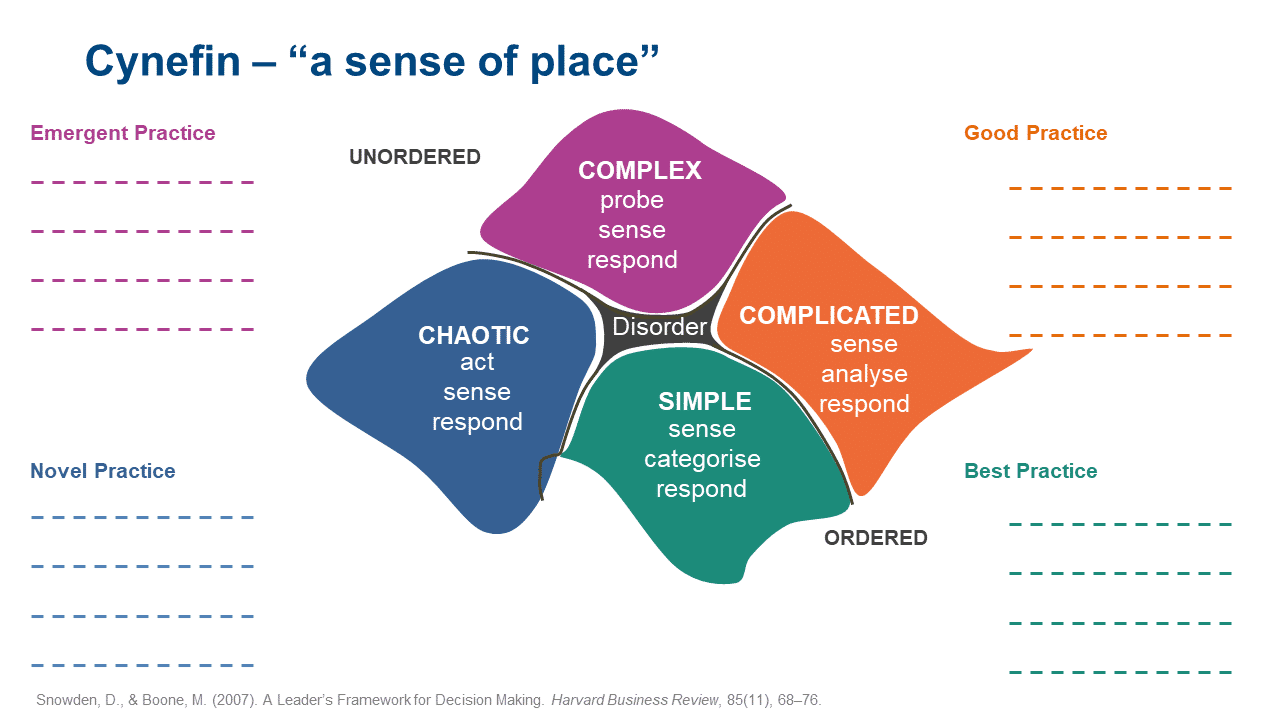6 The Cynefin Framework: Framing Decisions and Understanding Context
The Cynefin Framework
Framing Decisions and Understanding Context: The Cynefin Framework
An impactful project requires skills in logic, analysis and evaluation and applying those skills to persuasive reasoning and decision-making. This is based on critical, agile , and creative thinking.
This combination of application and learning will help you feel more confident as you develop good strategies of logic and reasoning you can use in your work and use these for strategic purposes. It will also help you to be confidence in the insights and recommendations you make to your sponsors and your agency or department leaders.
It is essential to understand the nature of the problems, challenges and opportunities that exist in your context and which influence and shape the decisions to be made.
David Snowden and the Cynefin Framework he has developed will help you in this regard. David Snowden of The Cognitive Edge has spent many years developing the concept of The Cynefin Framework which is a problem and decision-framing approach. You may have explored this concept in your other units. This complexity-framing model is one of the key thinking models that we use at QUT. If you have used it already keep going as each time you approach a new issue or problem with The Cynefin Framework, it is likely that you will learn something new.
Understanding an industry’s context and its competitive environment is a highly complex task. Decisions must be made with less than perfect knowledge, and often include highly dynamic variables, especially when technological disruption is likely to upend long-held assumptions. David Snowden proposes a decision framework for senior strategists and marketers.
David Snowden notes that when we are confronted with contexts and situations when we need to decide and act, “ … we will interpret the situation according to our personal preference for action” (Snowden, 2010).
To address this, The Cynefin Framework “gives us a very easy way of deciding how to work but it [also] gives us a divergent [way of thinking] – we sometimes call this requisite applicability. It basically says dependent on which space you’re in you should think differently, should analyze differently, rather the one-size-fits-all which has been a tradition of management theory” (Snowden, 2010).
To begin, watch the following video.
https://mediahub.qut.edu.au/media/t/0_pzhvy38l
Activity: How to use the Cynefin Framework
Consider where in the decision framework the set of decisions you need to make, should fit. Consider the likely mindset of the organisations that would potentially be making these long term strategic decisions. Ponder this for a moment.
As you watch the video, listen carefully for the nuances about each space, and be careful about the ‘cliff space’ between Simple and Chaotic. Also please have the reflection questions below in mind as you watch.
Consider your observations and reactions in the context of your current, and perhaps, past situations of decisions making, actions and outcomes. The image below summarises the emergent practices for each quadrant.

Questions
- Consider your observations and reactions in the context of your current, and perhaps, past situations of decisions making, actions and outcomes.
- How does the framework add to your understanding of how you, your teams and your organisation overall see and make decisions?
- How might you use this complexity decision framework in your own work? In your HIP thinking or as you approach the opportunity or challenge?
- Think about your own view of the world. What is your default approach to issues and decision situations?
- Think about how you might share with your immediate team your insights and preferences. How might you deal with these in your work context? What impact will your preferences
and those of others, have on the outcomes?
David Snowden suggests that by addressing issues from the place of complexity thinking, we not only have a way to work but the Cynefin Framework also gives us a divergent way of thinking. This is based on the idea that the more input into our thinking and decisions models, the more possibilities and opportunities we can explore.
To sum up, Snowden says The Cynefin Framework “gives us a very easy way of deciding how to work but it (also) gives us a divergent (way of thinking) – we sometimes call this requisite applicability. It basically says dependent on which space you’re in, you should think differently, should analyze differently, rather than one-size-fits-all which has been a tradition of management theory”.2
Here is a final word that might help you put this lesson in context and get us ready for the next lesson. The famous American General Stanley McChrystal3 discusses complicated and complex in detail. He represents the differences in this way:

Adapted from: McChrystal, S. C., Tantum; Silverman, David; Fussel, Chris. (2015). Team of Teams: New Rules of Engagement for a Complex World. Portfolio Penguin.
He says that complexity occurs when the number of interactions between components increases dramatically. His wrap-up statement is that the world has become in many ways less predictable despite technology and data-gathering and mining advances.

Decision Framework Template: Cynefin template ppt 2
References
- Snowden, D. J., & Boone, M. E. (2007). A leader’s framework for decision making. Harvard business review, 85(11), 68.
- McChrystal, S. C., Tantum; Silverman, David; Fussel, Chris. (2015). Team of Teams: New Rules of Engagement for a Complex World. Portfolio Penguin.
